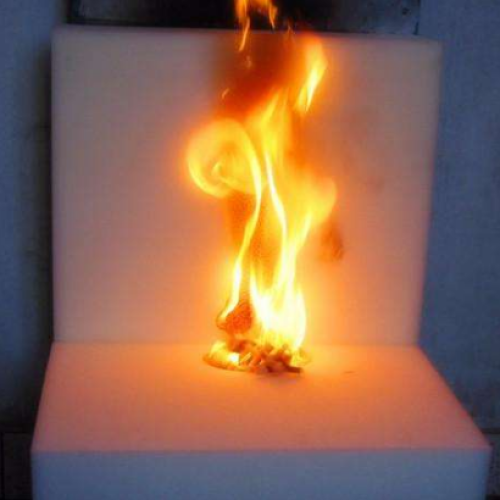Low-density polyurethane (PU) sponge foam, with a density below 18 kg/m³, faces a significant challenge in heat dissipation during production, particularly when the water-to-polyol ratio exceeds 4.5 parts per 100 parts of polyether polyols, and TDI (Toluene Diisocyanate) usage surpasses 55 parts. The limited heat dissipation within the foam can result in temperatures exceeding 180°C during the foaming process, posing a severe risk of self-ignition and potential fire hazards.
Both domestic and international industries have devised three primary methods to tackle this issue: negative pressure foaming technology, forced cooling technology, and liquid CO2 foaming technology.
Negative Pressure Foaming Technology:
In this approach, foam cells must withstand three pressures: atmospheric pressure (P1), internal gas expansion pressure (P2), and the weight of the foam above the cells (G). For foam to rise effectively, it must meet the condition P ≥ P1 + G + P2. By introducing negative pressure, P1 becomes a variable, and P2 is influenced by P1. Experimental results have shown that reducing external pressure by 30% (i.e., below 30% of atmospheric pressure) during foaming can lead to a 15-20% reduction in foam density. A 50% decrease in external pressure can result in a 25-30% reduction in foam density. Under a pressure of 0.1 MPa (1 atm) and a water-to-polyol ratio of 4.3, foam with a density of around 24 kg/m³ can be produced. Reducing the external pressure to 0.05 MPa under the same water ratio can yield foam with a density of 16 kg/m³. It is crucial to adjust the foam’s rise and solidification times to ensure optimal foaming under negative pressure conditions.
Forced Cooling Technology:
This technique is designed to prevent self-ignition by ensuring that the central temperature of soft foam does not exceed 170°C during the production of low-density foam under high moisture conditions. It is a cost-effective solution suitable for small and medium-sized domestic enterprises. Control of foaming time, limiting it to 30 minutes, is essential, and large foam blocks are transferred to a forced cooling chamber for further maturation.
Liquid CO2 Foaming Technology:
Liquid carbon dioxide (LCD) foaming technology, known as the “NovaFlex” technology developed by the Hennecke Machinery Company, a subsidiary of the German Bayer Group, has gained prominence in the industry. This method eliminates the need for auxiliary foaming agents like methylene chloride (MC) and CFC-11 in soft foam production, replacing them with cost-effective liquid CO2. Liquid CO2 costs only a quarter of MC and boasts over three times the foaming efficiency.
Internationally, this technology has been used to create foam with a density of approximately 14 kg/m³, including flat continuous foam (2.2m wide, 1.2m high) and molded foam. The CardiO method produces softer foam compared to traditional Maxfoam foam, featuring a highly porous structure and excellent resilience.
For optimal results in soft foam formulations, the choice of efficient surfactants, the optimized combination of amine and tin catalysts, and reduced tin catalyst usage are crucial in liquid CO2 foaming technology. Typically, less tin catalyst is required compared to MC foaming technology. Four parts of liquid CO2 produce a similar effect to 13 parts of MC, with a slight increase in water content to maintain foam hardness.

